“A landing net was thrown on the death convicts, like on fish...”
-
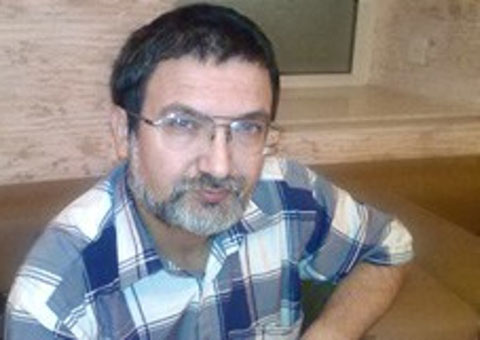
- Eldar Zeynyalov, the head of the Human Rights Center of Azerbaijan
In 1997, with the accession to the Council of Europe, Azerbaijan abolished the death penalty. 42 death convicts were pardoned, with the replacement of the death sentence first with 20 and then by 15 years of imprisonment.
The underground corridor for death
convicts in the Tbilisi remand prison continued to be used for
keeping especially dangerous criminals, whereas the firing chamber
was turned into a museum: everything was left as it was, just a
poster was hung on one of the walls.
Eldar Zeynyalov, a human
rights defender from Baku, agreed to tell some details:
"The
tunnel through which the bodies were taken out of the prison, started
being used for school excursions. A few years ago, the jail was
destroyed together with the underground section where the death
convicts were kept. The same was done in Baku. They were shot there.
I was told about the procedure. There were some things that I heard
for the first time... For example, a large landing net like one of
those used for fish, was put on the death convicts who resisted. One
executioner held the net whilst the other was shooting the convict
over the concrete bath in which the brain, tongue and blood fell
...
Then some bleach was thrown into the bath and everything
was washed off with a hose. Andre the corpses were piled one on
another the corner, behind a screen. They were only killed in the
firing basement, but were kept in usual cells, except for the fact
that there was no natural light and ventilation. They were fed with
usual food and were allowed to receive food parcels once a month...
It is quite interesting that there was no such firing basement in
Armenia, and the convicted Armenians were transported to Tbilisi and
Baku for execution."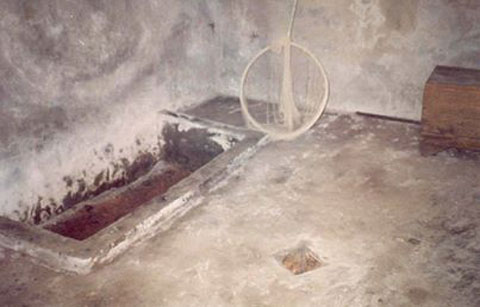
Photo 1: The firing basement in
Tbilisi. Here we can see the bath
with sloping from left to right for the blood, which
turned brown of blood over the years. Near the wall there is the net
which was thrown on the convict to press him to the bath. A corner of
the box where bleach was stored is visible too.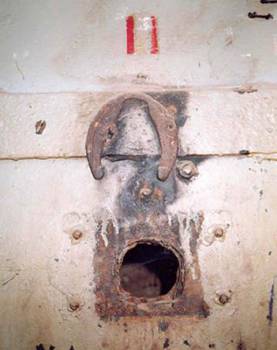
Photo 2: The
door of one of the death row cells in Tbilisi. Someone welded on a
horseshoe for "good luck" (pardoning). In 1997, after a
prolonged abstinence from the execution of death sentences, death
convicts were suddenly remembered. Some of them were executed, using
the short time remaining before the abolition of the death penalty.
However, the executioners didn't manage to execute all of the
convicts – 42 of them were lucky to get their sentences mitigated.
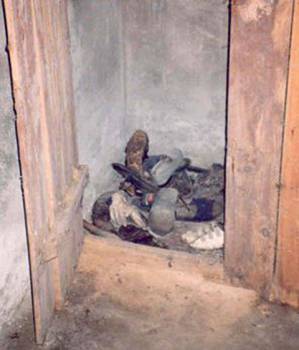
Photo 3: The firing basement in the Tbilisi jail. Shoes of
the last convicts, executed there in 1997. This museum of the death
penalty has been destroyed together with the prison. 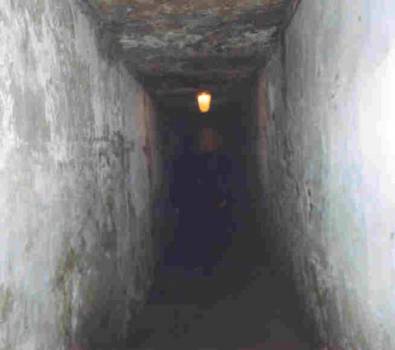
Photo 4:
Another corridor, leading to the firing basement in Tbilisi (the
first one was from the side of the “corridor of death convicts”).
It leads to the exit from the prison and was used to lead the
prisoners for meetings with their relatives and bringing out the
corpses, which were put in ordinary boxes for disguise. Since the
enforcement of the death penalty, the convicts were kept underground
and even minimal allowed movements (for the meetings) were conducted
in such a way that nobody could see them by occasion.
Palina
Stsepanenka, exclusively for the campaign “Human
Rights Defenders against the Death Penalty”.





